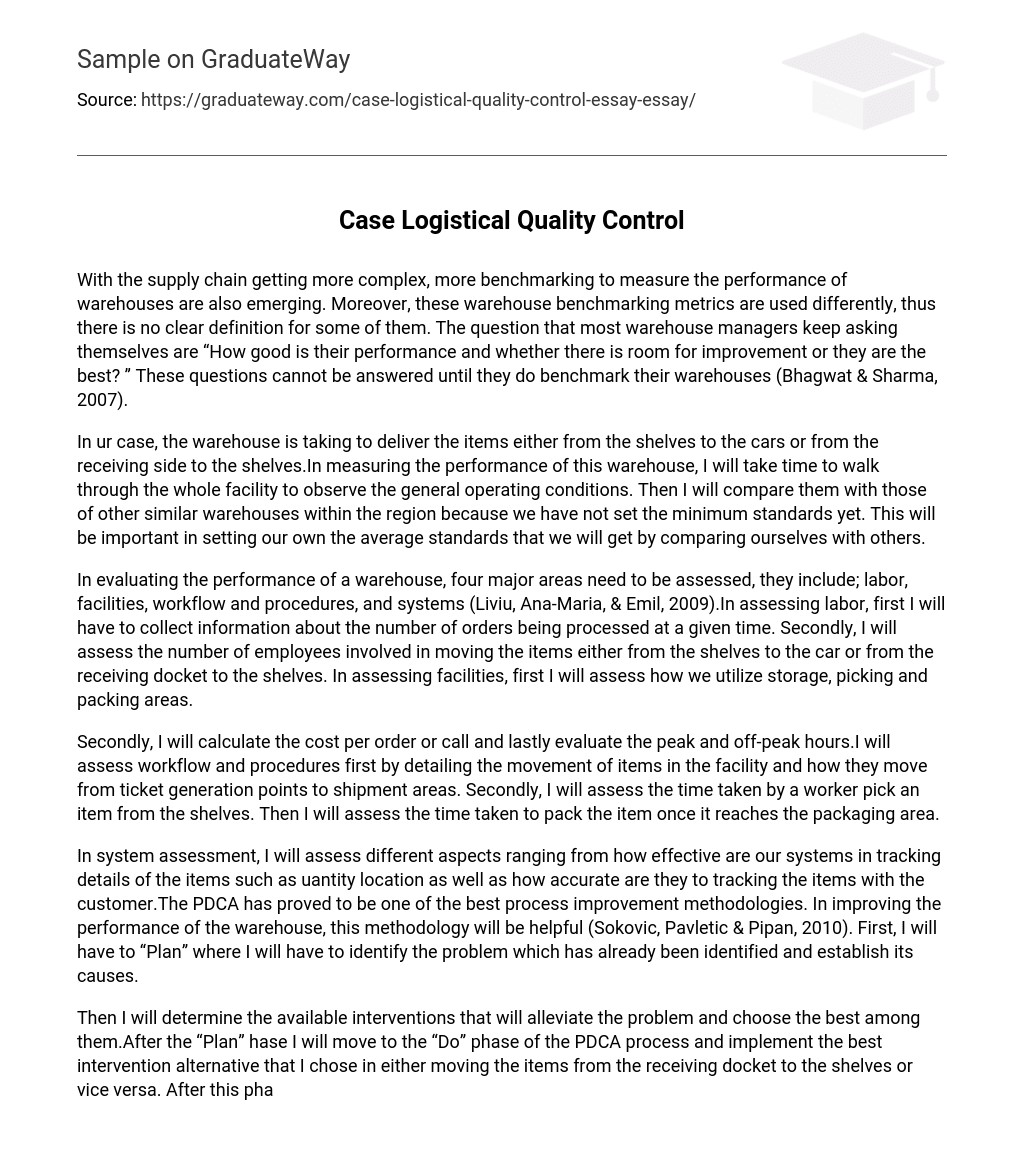With the supply chain getting more complex, more benchmarking to measure the performance of warehouses are also emerging. Moreover, these warehouse benchmarking metrics are used differently, thus there is no clear definition for some of them. The question that most warehouse managers keep asking themselves are “How good is their performance and whether there is room for improvement or they are the best? ” These questions cannot be answered until they do benchmark their warehouses (Bhagwat & Sharma, 2007).
In ur case, the warehouse is taking to deliver the items either from the shelves to the cars or from the receiving side to the shelves.In measuring the performance of this warehouse, I will take time to walk through the whole facility to observe the general operating conditions. Then I will compare them with those of other similar warehouses within the region because we have not set the minimum standards yet. This will be important in setting our own the average standards that we will get by comparing ourselves with others.
In evaluating the performance of a warehouse, four major areas need to be assessed, they include; labor, facilities, workflow and procedures, and systems (Liviu, Ana-Maria, & Emil, 2009).In assessing labor, first I will have to collect information about the number of orders being processed at a given time. Secondly, I will assess the number of employees involved in moving the items either from the shelves to the car or from the receiving docket to the shelves. In assessing facilities, first I will assess how we utilize storage, picking and packing areas.
Secondly, I will calculate the cost per order or call and lastly evaluate the peak and off-peak hours.I will assess workflow and procedures first by detailing the movement of items in the facility and how they move from ticket generation points to shipment areas. Secondly, I will assess the time taken by a worker pick an item from the shelves. Then I will assess the time taken to pack the item once it reaches the packaging area.
In system assessment, I will assess different aspects ranging from how effective are our systems in tracking details of the items such as uantity location as well as how accurate are they to tracking the items with the customer.The PDCA has proved to be one of the best process improvement methodologies. In improving the performance of the warehouse, this methodology will be helpful (Sokovic, Pavletic & Pipan, 2010). First, I will have to “Plan” where I will have to identify the problem which has already been identified and establish its causes.
Then I will determine the available interventions that will alleviate the problem and choose the best among them.After the “Plan” hase I will move to the “Do” phase of the PDCA process and implement the best intervention alternative that I chose in either moving the items from the receiving docket to the shelves or vice versa. After this phase, I will move to the “Check” phase where I will assess the results of the implemented alternative to establish whether it has improved the process all not. If there is a great improvement, I will move to the final phase “Action” where I will implement the chosen alternative in the whole facility (Gorenflo & Moran, 2010).





